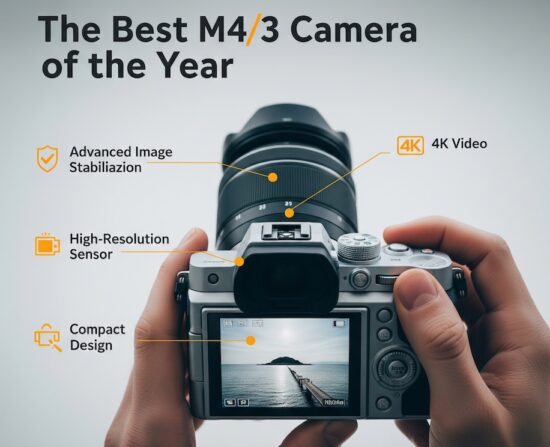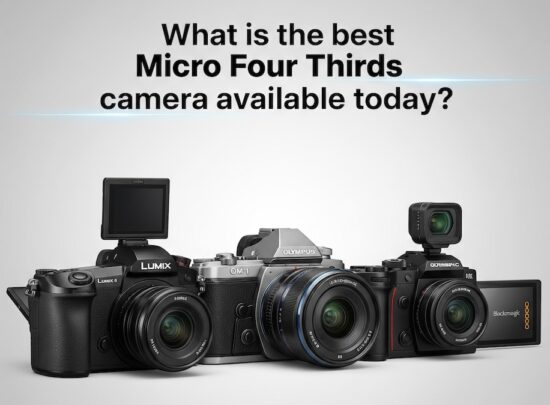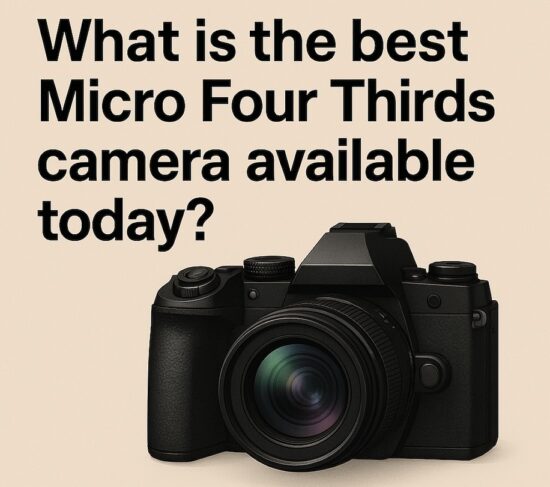
Based on reviews, ratings, and comparisons, the Panasonic Lumix GH7 emerges as the top performer Micro Fourth Thirds camera available today for most users, particularly those requiring pro-level video and hybrid shooting capabilities.

If your focus is wildlife, action, or all-around stills, the OM System OM-1 Mark II is a close contender and often recommended for professionals.

For creative or travel-oriented photography, the newer OM System OM-3 (released February 2025) offers unique film simulations and a retro design but at a premium price that some reviewers find unjustified.
Here’s a comparison of the top current MFT cameras available in July 2025, based on key specs, strengths, and target use cases:
| Model | Release Date | Key Specs | Strengths | Weaknesses | Best For | Approx. Price |
|---|---|---|---|---|---|---|
| Panasonic Lumix GH7 | June 2024 | 25.2MP BSI CMOS sensor; 5.7K/60p video (unlimited); 4K/120p; 7.5-stop IBIS; Phase Hybrid AF; CFexpress + SD slots; 3.68m-dot EVF | Exceptional video (ProRes RAW, 32-bit float audio); high dynamic range; fast burst (13fps mechanical); robust build | Larger/heavier than some MFT bodies (1.42 lb); video-focused, so overkill for pure stills shooters | Hybrid video/stills pros, filmmakers, content creators | $2,200 |
| Panasonic Lumix G9 II | September 2023 | 25.2MP CMOS sensor; 5.7K/60p video; 4K/120p; 8-stop IBIS; Phase Detect AF; Dual UHS-II SD slots; 3.68m-dot EVF | Excellent low-light performance (dual gain output); 100MP pixel-shift; customizable LUTs; great ergonomics | Similar size to full-frame rivals; battery life middling (400 shots) | Low-light photography, landscapes, hybrid use | $1,900 |
| OM System OM-1 Mark II | January 2024 | 20.4MP Stacked BSI sensor; 4K/60p video; 120fps burst (electronic); 8.5-stop IBIS; Cross Quad Pixel AF; Dual UHS-II SD slots; 5.76m-dot EVF | Superior stabilization; AI subject detection (birds, animals); IP53 weather sealing; computational modes (Live ND, grad filters) | Video lags behind Panasonic; 20MP sensor shows age in resolution | Wildlife, action, outdoor pros | $2,000 |
| OM System OM-3 | February 2025 | 20.4MP Stacked BSI sensor (same as OM-1 II); 4K/60p video; 80MP pixel-shift; 8-stop IBIS; Phase Detect AF; Single UHS-II SD slot; 2.36m-dot EVF | Compact retro design; creative tools (film sims, Art Filters); weather-sealed; excellent handling for travel | Expensive for specs; no joystick; single card slot; mixed reviews on value | Travel, street, creative photographers | $2,000 |
| OM System OM-5 Mark II | June 2025 | 20.4MP Live MOS sensor; 4K/30p video; 50MP handheld high-res; 7.5-stop IBIS; Phase Detect AF; Single UHS-II SD slot; No EVF (uses optional add-on) | Ultra-compact (0.92 lb); IP53 sealing; improved grip over original; affordable entry to weatherproof MFT | Underwhelming upgrade (same sensor as 2022 OM-5); limited video (8-bit); no EVF built-in; lags in AF speed | Beginners, travel enthusiasts on a budget | $1,200 |
Why the Panasonic Lumix GH7 is the best overall
- It excels in versatility with class-leading video specs (e.g., 5.7K open-gate recording, 240p slow-mo) and solid stills performance, making it ideal for modern creators. Reviews praise its unlimited recording times and stabilization for run-and-gun shooting.
- If video isn’t a priority, consider the OM-1 Mark II for faster bursts and better wildlife AF.
Other Considerations
- New in 2025: The OM-3 brings OM System’s flagship sensor to a smaller body but receives mixed feedback for its $2,000 price—some call it a “joy” for daily use, while others say it’s overpriced compared to the OM-1 II. The OM-5 Mark II is a minor refresh with improved ergonomics, but it retains the same older sensor, earning “underwhelming” labels in reviews.
- Budget Options: For under $1,000, the Olympus OM-D E-M10 Mark IV offers beginner-friendly features and 20MP resolution. Older models like the Panasonic GH6 or OM-1 (non-Mark II) provide value if you shop used.
